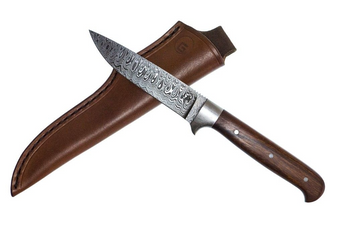Description
- The knife model is manufactured based off the drawings and sample books of 1932
- The body of the knife (skeleton) is composed of two stamped brass liners, each having welded pins made of nickel silver, a back spring, a guard attached to the back spring, a connecting piece as well as a blade.
- The part resulting from “liners” and “pins” is characterized as a “booklet”
- The blade is made of 320-layer non-stainless Damascus using recycled steel from the German battleship Tirpitz – the wreck was salvaged by a Norwegian and German company.
- A renown blacksmith folded the steel using traditional handcraft
- All of the parts are permanently riveted together – this pocket knife's production method is comparable to that of how the knife was assembled in 1932.
- The knife's scales are made of mammoth tooth, a very fine and sensitive material, thinly sliced and difficult to handle during assembly.
- The scales are carefully attached to the knife's skeleton
- All of the approximately 100 different steps are real handcraft performed by highly skilled professionals
- Information:
- Total Length: 6 inches (152 mm)
- Blade Length: 2.5 inches (63 mm)
- Blade Strength: 0.08 inches (2 mm)
- Hardness: 61 – 63 HRC
- Pattern: Wild Damascus












